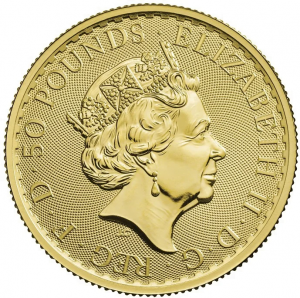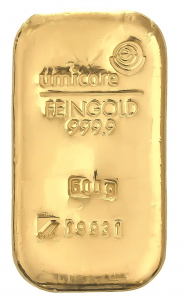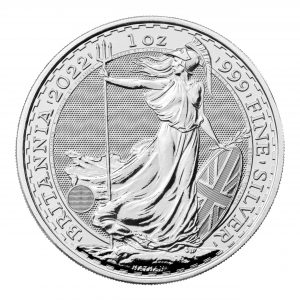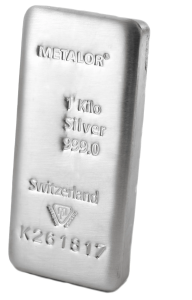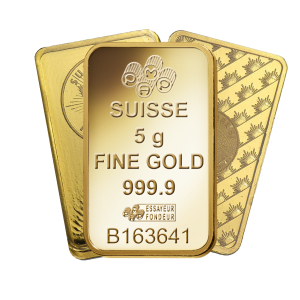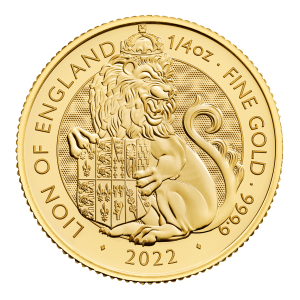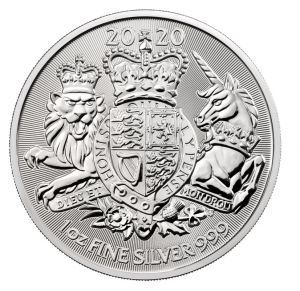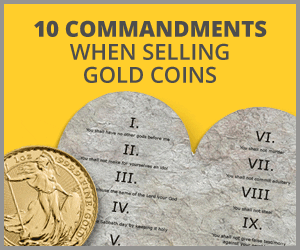Investing in silver coins may be attractive, but there are certain important points we need to consider first. In this article we explore “Are silver coins a good investment?”
Size and investment options
Silver coins are available in a variety of sizes. Apart from the normal sizes up to an ounce, they are now available in larger versions of 10 ounces and 1 kg. There has been speculation in the market for a while that the prices of silver are likely to go up significantly. With the spot price currently hovering around £11 per ounce, there are great profits to be made if it rises threefold. The other reason that silver is attractive to investors is that it is 85 times cheaper than gold. Gold can be prohibitively expensive for retail investors. Silver offers access to the precious metals market at an unbelievable price point.
The industrial demand for silver
Silver has a huge industrial demand. It is widely used for the manufacture of electronics, computers, solar panels, and has a range of other industrial applications. Reducing supplies of the white metal has prompted investment experts to speculate about a possible hike in prices. If you are thinking of silver coins investment and taking a calculated risk on its price, you may have to wait for at least 3 to 5 years before you can get a reasonable return.
They can be a great investment if bought in the right way at the right time. Silver is significantly undervalued compared to historical levels, so a medium to long term holding is advised to maximise returns.
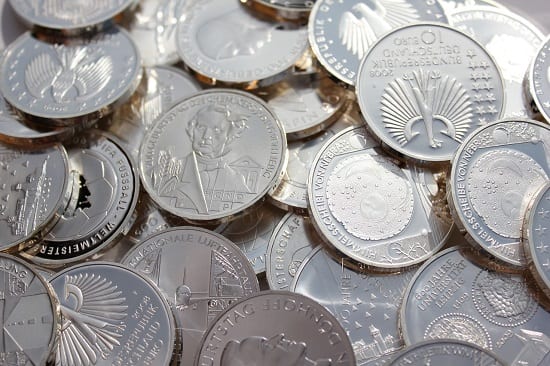
Silver coins can be a great investment if the right coins are chosen
Need for liquidity and buying coins which can be resold
Your investment is only as good as its liquidity. If you cannot take advantage of the right price point in the market by selling easily and quickly, the investment is useless. Therefore, always buy silver coins with a mass appeal and avoid purchasing obscure and rare coins. Well-known coins enjoy a vibrant secondary market, which makes it much easier to sell when the time is right. 1-ounce silver coins like the silver Krugerrand is an ideal choice.
How about collectable coins?
You may be able to extract better value from your investment if you choose a collectable coin. The premiums on these coins usually rise very quickly and investing in them can be an excellent strategy to get quick returns. Likewise, a popular coin like the 1-ounce silver Britannia makes an excellent addition to your investment portfolio. It ticks all the boxes for divisibility, liquidity and collectability. So, it’s evident that investing in silver coins can be a great idea as long as you plan properly and buy the right coins which are likely to meet your investment goals.
Understand purity levels
When choosing coins, purity is an important factor. Many silver coins are available with 95.8% purity. But, if you do your research well and choose a coin like the Canadian Silver Maple Leaf, you have a coin with 99.9% purity. There can be different strategies for choosing the right silver coins for your investment. Purity, divisibility, variety and value are important considerations.
Tax advantages and efficiencies
From a tax perspective, silver coins which are legal tender in the UK will automatically be CGT free.
Prior to the UK leaving the EU, Physical Gold were the only silver dealer in the UK who could provide VAT free silver. Post-Brexit this is no longer possible. Due to the following reasons though, we are able to sell silver coins and bars at similar “all in” prices to previous:
- Free delivery – we can now provide free delivery, previously this was chargeable
- Reduced product range – we now provide a reduced range of silver products. This means we have negotiated better prices for the products we supply, we pass this discount on to our customers!
The overall net result is that the price difference when you buy silver coins and bars the price difference even with paying VAT is negligible and certainly competitive with other UK dealers.
We also can now accept orders for mixed gold and silver purchases, whereas previously we could only process “silver only” orders to obtain VAT free silver.
Contacting Physical Gold for Advice
Please visit the Physical Gold website for more information on how to profit from your investment in silver coins. Speak to us today on 020 7060 9992, leave an instant message or complete our contact form. We look forward to being of service and support.
Image credit: feiern1
Investors have shown a healthy interest in purchasing silver coins over the last few years. One of the factors for investors who opt to invest in silver is simply the gold-silver ratio. Silver is a lot cheaper than gold, allowing investors who are starting to enter the precious metals market and buy the white metal.
Investors can also expect capital appreciation on silver investments, due to the rising demand and falling supplies of the white metal. Of course, buying physical silver, like any other precious metal is devoid of counterparty risks, as the owner holds the asset in its physical form. Silver coins are a better investment for many investors, as their legal tender status in the country circumvents the need to pay Capital Gains Tax (CGT). Of all the silver coins in the market, possibly the best investment option is the silver Britannia.
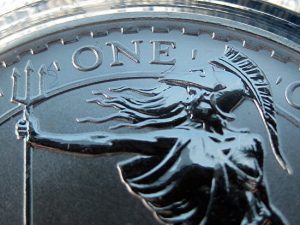
A close-up of the intricate design elements of the Silver Britannia
History of the coin
The coin was introduced in 1997, ten years later than its gold counterpart – the gold Britannia. Since its release, the coin has been minted in different dimensions and has enjoyed immense popularity amongst investors. Although the silver market is fairly volatile, it is lucrative for investors to purchase this coin at current prices, and book profits in later years, once the spot price of silver rises. The low price of silver, when compared to gold is only one of the factors that have spurred investors to buy the silver Britannia. The intricate design of the coin is very attractive and features the iconic image of Britannia, with the shield and trident on the coin. The other side of the coin features the image of our reigning Queen, Elizabeth II.
How to buy the silver Britannia?
They are best purchased through a professional precious metals broker. Reputable dealers can be found on bnta.net. Most will offer discounts for quantity purchases, so it’s best to buy in one go to achieve the best discounts, rather than little and often. Certain online portals are structured to deliver them without the need to charge VAT, saving a further 20%.
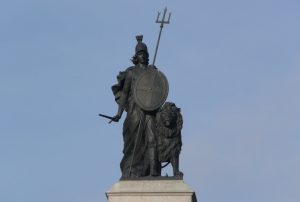
The iconic image of Britannia depicted here in a statue
When identifying a reputed dealer, it is important to assess the company’s market reputation and the years in business. The best precious metal dealers in the country have a formidable track record of being in business for many years and will display good customer testimonials. All of this can be verified online. Most reputed dealers are registered with the British Numismatic Trade Association (BNTA). If you visit their website, you can access a full list of registered dealers in the UK. From here on, the best strategy is to build a relationship with the dealer. If you let the dealer know that you are keen to invest in silver Britannia coins, their team can advise you on the best deals available in the market. Discussing your investment objectives with the dealer can also be helpful, as they can guide you to the best deals available.
Tax considerations
The silver Britannia is considered to be legal tender in the UK. This means the coin has a face value and it qualifies for Capital Gains Tax exemption. So, the silver Britannia can be an excellent addition to your precious metals portfolio.
Get in touch with us for all your silver investments
Physical Gold is one of the U.K.’s most reputed precious metals dealers and is registered with the BNTA. We have a great team of investment advisors who can guide you, and help you acquire the best deals on silver Britannia coins. Call us today on (020) 7060 9992 or drop us a line, so we can get in touch with you and discuss your investment plans.
Image credits: Eric Golub and Glamhag
The Britannia is one of the most famous coins ever released in British coinage history. It is the pride and joy of the Royal Mint and also forms the backbone of any precious metal coin portfolio. The Britannia is available in both gold and silver and offers tremendous liquidity to the portfolio of an investor. Due to its reputation as one of the best-known coins in the world, it is easily saleable for cash.
The Britannia coin
The Britannia gold coin is a 1-ounce coin with a purity of 999.9 and a face value of 100 GBP that was launched by the Royal Mint in 1987. It is available in bullion and proof finishes, as well as fractional sizes. The Royal Mint also introduced a silver Britannia coin in 1997, which has a face value of 2 pounds. The silver Britannia contains one Troy ounce of fine silver. Both the gold and the silver coin feature a portrait of the reigning British monarch, Queen, Elizabeth II on the obverse of the coin. The reverse of the coin features the classic image of Britannia. The event featured on the coins issued from 1987, was designed by Philip Nathan. In 2018, the Royal Mint also released a Platinum version of the Britannia coin that contains one Troy ounce of Platinum and has a face value of £100.
The iconic image of Britannia above Somerset House in London
Who was Britannia?
In 43AD Britannia meant Roman Britain. This was an area to the south of what is known today as Scotland. In 197AD Roman Britain was divided into 4 provinces and 2 of these were Britannia Superior and Britannia Inferior. Britannia was the name given to this Island. In the 2nd Century, Roman Britannia was what is recognised today as the goddess armed with a trident and shield. Britannia was featured on all modern British coinage until being redesigned in 2008.
The Romans used the term ‘Britannicae’ to refer to the British Isles. The inhabitants of Britain were called ‘Britons’ at the time. Another name for the people of the British Isles used by the Romans was ‘Britanni’. Since the British Isles represented the furthest territory of the Roman Empire, it became symbolised with the goddess of warfare and water. Roman mythology portrays a goddess called Minerva, who is popularly known as the torchbearer of arts, commerce, strategy and wisdom. The image of Britannia was based on the icon of goddess Minerva and came to personify the British Isles over the years.

A World War 1 Poster depicting Britannia
Reinforcement of the Britannia image
After the invasion of England by the Anglo-Saxons, the ethnicity of the country changed drastically, with the exodus of the original Celtic Britons. However, years later, as Queen Elizabeth, I combined England, Scotland, Ireland. and Wales and significantly increased the nation’s naval power, the image of Britannia was restored as a representation of the nation’s power and the Queen. This was further reinforced during the reign of the great Queen Victoria when the British Empire became the most powerful empire in the world and Britannia ruled the waves. The iconic image of Britannia was then put firmly in place to represent the power of the British Empire, and its monarch.
Physical Gold can assist you in purchasing Britannia coins
Whether it’s gold Britannias or silver ones that you’re after, our coin experts at Physical Gold can advise you on how to get the best deals. Call us on (020) 7060 9992 or drop us an email and a member of our team will reach out to you at the earliest.
Image credits: Alastair Rae and Picryl
When investing in any form of silver, it is recommended that you always go to a reputable broker. Lots of companies offer similar deals or services and it’s easy to be swayed by promises of deals that are more often than not too good to be true. A reputable broker will have extensive knowledge of the market and will able to properly advise you on the right investments for your requirements. Here is an idea of what to expect from a reputable broker.
Transparent pricing
A reputable broker should always be transparent about their prices. Before working with any broker, you should make sure there are no hidden costs involved as some brokers will charge extra for insurance and shipping costs. You may also want to find out what rates they charge to cover their admin costs, as well as these, can vary a great deal from broker to broker.
They know the market
If you’re planning to invest your hard-earned 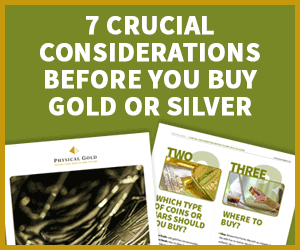
They’ll act in your interest to ensure the safety of your investment
A reputable broker will ensure safe delivery of your goods by providing insured shipping and real-time tracking. They may also offer you secured storage of the goods in their own vaults or secure delivery to a vault of your choice. Some brokers may even have a physical office or premises where you can personally take delivery of the goods by arrangement. Before purchasing silver coins through a broker, you should first make sure of their policies with regards to access to your goods. For example, can you access the goods at any time? Are you able to withdraw the goods whenever you wish? These are all questions you should be asking your broker before investing with them.
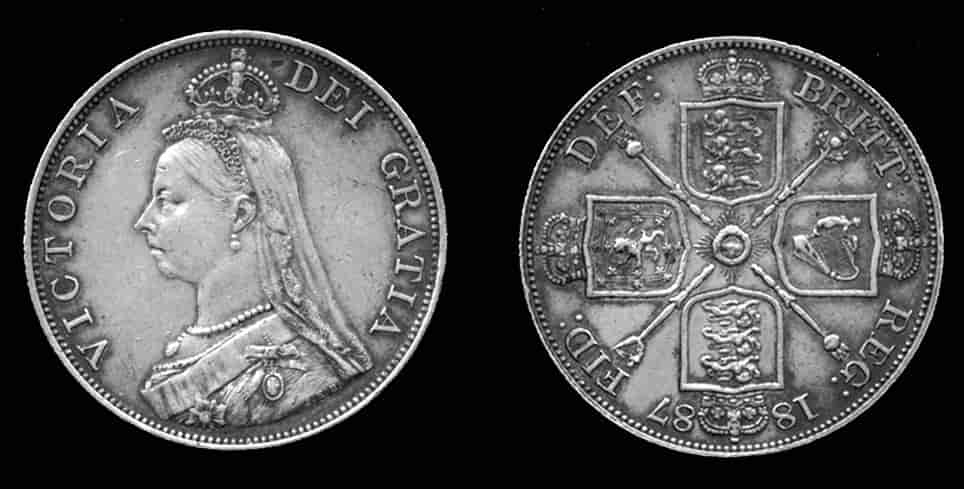
1887 Queen Victoria double florin
Access to a wide range of suppliers
A reputable broker will have access to the best suppliers. As an investor, this means you will benefit from the best selection of goods at the best possible prices. At Physical Gold, for example, we offer a huge selection of silver in a variety of forms including bullion coins, semi-numismatic coins, and silver bars.
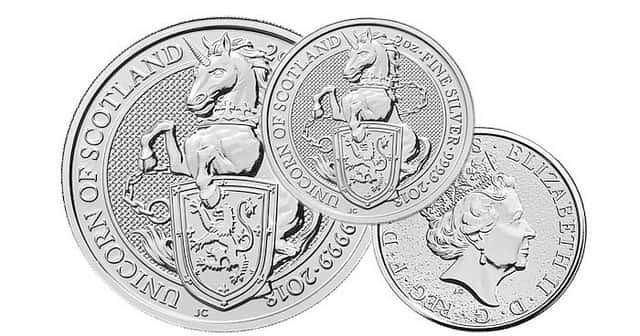
2oz silver Queen’s Beasts coin
High standard of customer support
When dealing with any broker, good customer support is essential. A reputable broker should be easy to contact whilst also being able to offer you the investment advice you need. You also may want to check that they offer some form of telephone support, particularly if you don’t have much previous experience of investing in silver.
How to check whether a broker is reputable
Before buying through any broker, you should first do a bit of background research to check that they are who they say they are and that their services are legitimate. There is a lot of bait and switch companies out there, particularly online, so you need to make sure of their authenticity. A good place to start is by checking review sites and reading what other people have said about them. If they are an established broker and have been about for some time, then they should have accrued a fair amount of reviews allowing you to make an informed decision over whether or not to go with them. The top dealers will be members of the British Numismatic Trade Association (BNTA) as well as other smaller society’s such as The Royal Numismatic Society.
Purchase silver coins through Physical Gold
Physical Gold is one of the UK’s leading dealers in gold and silver. We offer a range of tax-efficient ways to buy precious metals at market leading rates. Should you require our assistance, Physical Gold’s brokers can offer you their valuable expertise, helping you put together a portfolio of hand-picked, high-performance silver coins. To speak to one of our experienced advisers today, please give us a call on 020 7060 9992.
Image Credits: Wikipedia and Money Metals
Tarnishing can spoil the look of silver bars and coins, as well as have an impact on their value. Here are some tips to follow if you want to remove unsightly blemishes from the surface without doing damage to the precious metal beneath.
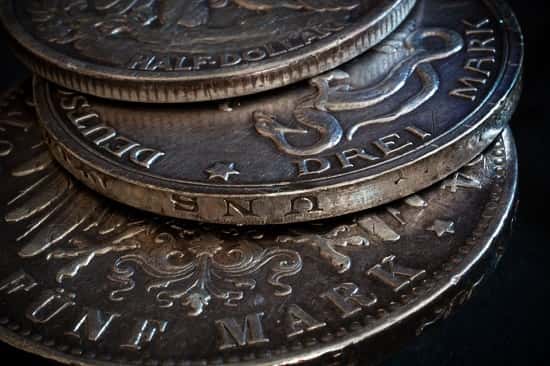
Tarnished silver coins just don’t have the same level of appeal
Gather your ingredients
There are seven ingredients you’ll need to get together if you want to make your silver bars and coins sparkle again when they become tarnished. We’ll go through them first, then explain how to use them together to get the desired result:
- Non-reactive container (e.g. a plastic mixing bowl)
- Baking soda
- Salt
- Aluminium foil
- Rubber gloves
- Kitchen towel and
- Hot water
Setting up to clean silver bars and silver coins
First prepare your non-reactive container by rolling out the foil and using it to line the bottom of the bowl, leaving no exposed areas. Make multiple passes with the foil if necessary.
Next add the hot water, either by boiling a kettle and allowing it to cool a little, or placing a measuring jug in the microwave and heating it for around three minutes on full power to get the right temperature. The amount of water you need will depend on the size of the silver bar or the number of coins you need to clean, but 500-600ml should suffice in most cases.
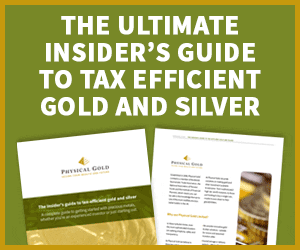
Pop in a teaspoon of salt, along with two or three tablespoons of baking soda, giving the liquid a stir afterwards. Now it’s time to add the silver, which should be done gently wearing the rubber gloves to reduce the abrasions and avoid injuring your skin in the hot water solution.
It should take about half a minute for the solution to get to work, lifting away the tarnishes and leaving the surface of the silver clean and shiny again. Dry the silver with a kitchen towel after removing it from the water and you’re good to go.
Things to avoid when cleaning silver
There are some fairly drastic approaches to cleaning silver recommended online, but it’s best to stick to the gentlest, safest option, rather than anything that might end up abrading the surface of the metal and compromising it further.
Scrubbing, brushing and the use of harsh chemical cleaners or detergents isn’t sensible. If you’ve bought silver bars or coins (such as Britannias or Sovereigns) as an investment, rather than acquiring vintage currency as part of a collection, then the simple method we’ve described above should be sufficiently effective.
Take precautions to protect silver bars and silver coins
Once you’ve managed to get rid of the tarnishing, it’s a good idea to try and prevent this from building up again over time. To do this, store your silver in an airtight container that is sealed against the elements so that it is not exposed to moisture and other harmful substances.
Contact Physical Gold for silver investment advice
If you have yet to get on board with silver, or you want to increase your holdings of this valuable metal, Physical Gold is here to help. Call 020 7060 9992 or send us an email today for all the advice and guidance you need.
Image Credit: Pixabay
1983 was an important year for British coinage. It was the year in which the British pound coin was minted and put into circulation to replace the Bank of England’s one pound note. The pound note saw its last issue at the end of 1984. The note continued to be in circulation until 11th of March 1988. On that date, it was removed from circulation.
Like all other UK banknotes, the pound note remained redeemable at the bank. But, for all official purposes, the pound note had been terminated and replaced with the British pound coin. Interestingly, the Royal Bank of Scotland continued the issue of pound notes. Similarly, the Channel Islands continued to use them as well. But the pound coin gained popularity and eventually became the more widely used form of currency. In this article, we will overview the history of the British pound coin.
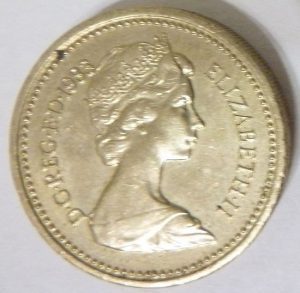
1983 one pound coin with the Queen wearing a tiara
The purpose of issuing a pound coin
The main reason for the withdrawal of the 1 pound note was its longevity. The British one pound banknote survived in circulation for approximately 9 months only. The Royal Mint found out that after repeated usage, the pound notes would often end up being damaged, or defaced. A pound coin, on the other hand, could remain in circulation for 40 years or more. Therefore, on 31 July 1981, the government announced its intention to replace the one pound note with the one pound coin.
The design of the pound coin
The obverse of the pound coin bears a Latin inscription engraved on it. This inscription reads ‘Elizabeth II D G REG’. The abbreviation stands for the words “Dei Gratia Regina”. The entire inscription, when translated into English means “Elizabeth II, by the Grace of God, Queen and Defender of the Faith”. Since the original release of the pound coin on 21 April 1983, four portraits of the Queen, each different from the other, have been used. The year of the mintage was also engraved alongside the Latin inscription.
Discover the 7 crucial considerations before you buy gold coins. FREE download – click here
The first series of coins released in 1983 used a portrait of Queen Elizabeth the second, which had been created by designer Arnold Machin. This portrait appears on the obverse of the coin and features the Queen wearing a tiara. By 1985, a new portrait of the Queen was used, and it was created by Raphael Maklouf. In this portrait, the Queen is featured wearing the George IV State Diadem. This version of the pound coin was issued till 1997.
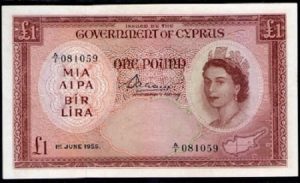
A one-pound banknote from Cyprus – 1955
The changing face of the pound coin
From 1998 to 2015, the design of the pound coin was changed yet again. This time, a new portrait created by Ian Rank-Broadley was used. Once again, the Queen’s portrait depicted her wearing a tiara. A makeover of the pound coin took place again in 2015. This time, well-known designer Jody Clark was commissioned to create the design. Her portrait of the Queen was introduced on the pound coin in 2015 and depicts the monarch wearing the George IV State Diadem.
The reverse of the pound coin had its design changed every year since 1983. This was done to ensure the complete representation of England, Scotland, Wales and Northern Ireland, as parts of the UK. Each year, the one pound coin would have a different emblem which represents each geographic area along with an inscription on the edge. The words, “one pound” can be found on the reverse of all these coins.
The new pound coin 2017
The new one pound coin has a 12 sided, bimetallic structure. This coin was released on 28 March 2017. A design competition was organised with participation from members of the public. This competition was unveiled in 2014 and the results, which were declared in March 2015 named a 15-year-old boy called David Pearce as the winner. The new design featured a rose, thistle, leek and a shamrock, ensconced by a crown.
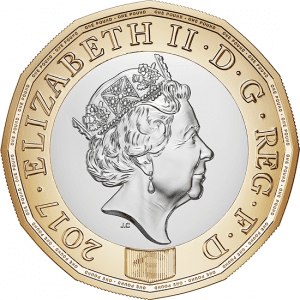
The 12-sided one pound coin was introduced in 2017
Counterfeit coins
Unknown to many, as the round one pound coin gained popularity, counterfeiters took to duplicating this coin. By 2013, there was an estimated 3.04% of counterfeit coins in circulation. The geographical areas that had the maximum number of counterfeit coins were Northern Ireland, the South-East of England and the City of London. Coin testing companies were commissioned by the Royal Mint to study the problem. The coin testing professionals found out that the actual number was approximately twice that estimated by the Royal Mint.
Many times banks did not check the coins they are receiving. As a result, many banks were also inundated with counterfeit currency. The experts detected that many counterfeit coins had poor quality, along with marked visual differences in design. Of course, there were more sophisticated counterfeiters, that would require a specialised machine to detect.
The end of the round pound
The last batch of the British round one pound coins was minted in December 2015. The 12 edge coin that has replaced it is a bi-metallic coin whose design makes it harder to duplicate. The coin also has a concealed security feature, which is a code that becomes visible under a certain wavelength of ultraviolet light. There were a few other round pound coins in circulation as well, although these were never legal tender in the UK.
These coins were minted by the British Crown dependencies and Gibraltar, amongst others. They were identical to the one pound coin circulated in the UK and carried the same portraits of the British monarch. Some of these coins have remained in circulation, as these territories have not stopped the mintage of the coins or changed it.
To find out more about collectable UK coins, call Physical Gold
Physical Gold is one of the most reputed precious metal dealers in the UK. We also deal in precious coins and if you want to get an evaluation done, or wish to purchase specific coins of value, please call us on (020) 7060 9992. You can also contact us via email and a member of our customer service team will be happy to call you back.
Image credits: Wikimedia Commons, Wikimedia Commons and Wikimedia Commons
Selling silver coins can be more difficult than you think. When someone goes to the high street to sell silver, it’s difficult to get the real value that the silver may be worth. Generally, when selling silver coins, you should receive a price below the spot price of silver on that day. However, the price you get will largely depend on how you have stored your silver coins and the condition they are in. In this article, we will explore the best ways to sell your silver coins and receive the best price.
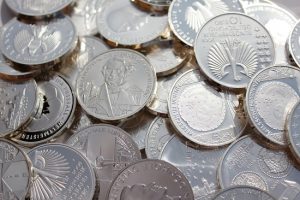
It’s best to sell silver coins through a reputed dealer
Identifying an online broker
The best way to sell your silver coins is to identify a reliable broker. A list of reputed and reliable precious metal dealers can be found on the website of the British Numismatic Trade Association (BNTA). Once you have identified a broker near you, it’s important to establish a good working relationship with the company. If you regularly buy and sell silver coins, you should be able to quickly establish a good relationship that can ensure the best prices for your coins. Remember, most reliable brokers will already have a buyback guarantee, so if you buy coins from them, selling these should not be a problem.
They can be sold in various ways. Many silver dealers can be found online who will pay you according to the weight of silver, and potentially extra if the coins have a historical or scarcity premium. They will be able to explain the process, but generally, you will need to send the coins to them after agreeing on a price. These coins can also be sold at auctions (for highly valuable coins or large collections), at a local jeweller if convenience is a higher priority than price, or privately.
Online auctions
Online auctions posted by sites like eBay, may look like a good place to sell your silver coins, however, you may not get the best possible price. Your coins may mostly be purchased by dealers who will try to pay the least possible price to get a bargain.
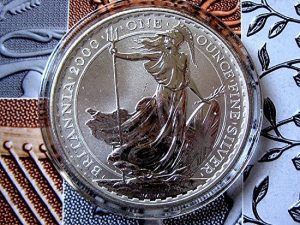
Well known coins like the Silver Britannia are great for investors
Taking care of your silver coins
You are likely to receive a higher price if the silver coins are in good shape. When you purchase your silver coins, ensure that they remain intact inside the sealed packaging. This proves that the coin has not been tampered with and usually, the sealed packaging also comes with a certificate of authenticity. This can ensure better prices for your silver coins. If you buy your silver coins from another collector, and they arrived without packaging, please ensure that you store your coins in a dry environment, so that they do not tarnish. When polishing your silver coins, make sure you do not use chemicals or abrasives that are likely to damage the coins.
Buying the right coins
When you purchase your silver coins, it’s important to ensure that you do not end up buying obscure coins that are unknown. Buying well-known silver coins like the silver Britannia ensures liquidity and these well-known coins are more likely to fetch you the best prices and sell quickly. If you do invest in rare and collectable coins, research them thoroughly before you purchase. If the coin commands a rarity premium, then you are likely to attract interest from collectors. In such cases, the value of the coin will be much more than its weight in silver and depending on the demand of the coin, you should receive a good price.
Before selling silver coins, speak to our experts
Physical Gold is one of the country’s best-known precious metal dealers. Our coin experts can advise you on the best way to sell your silver coins and the prices you could receive. Please call us on (020) 7060 9992 or get in touch with us online before you make a sale.
Image Credits: feiern1 and Eric Golub

